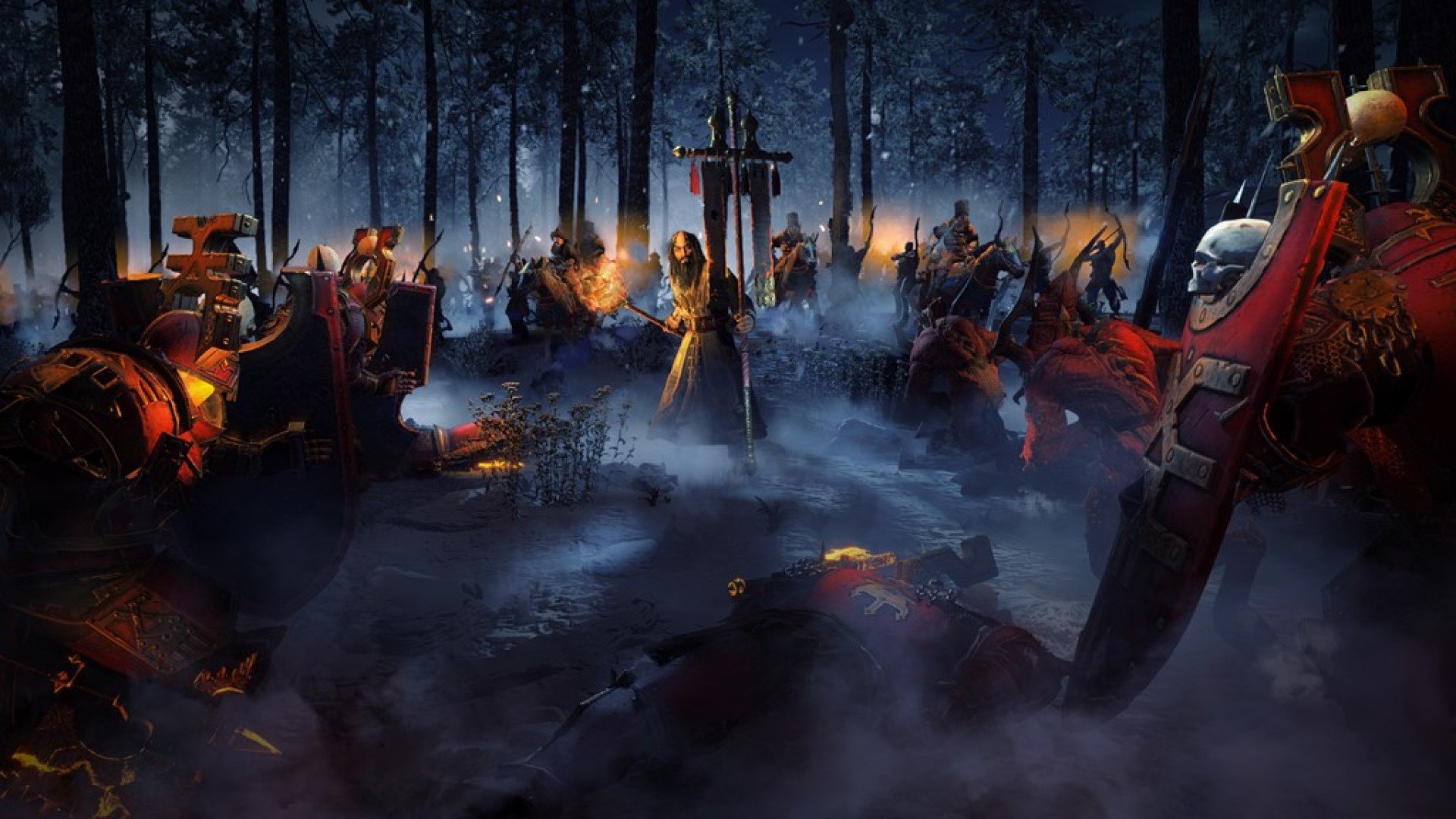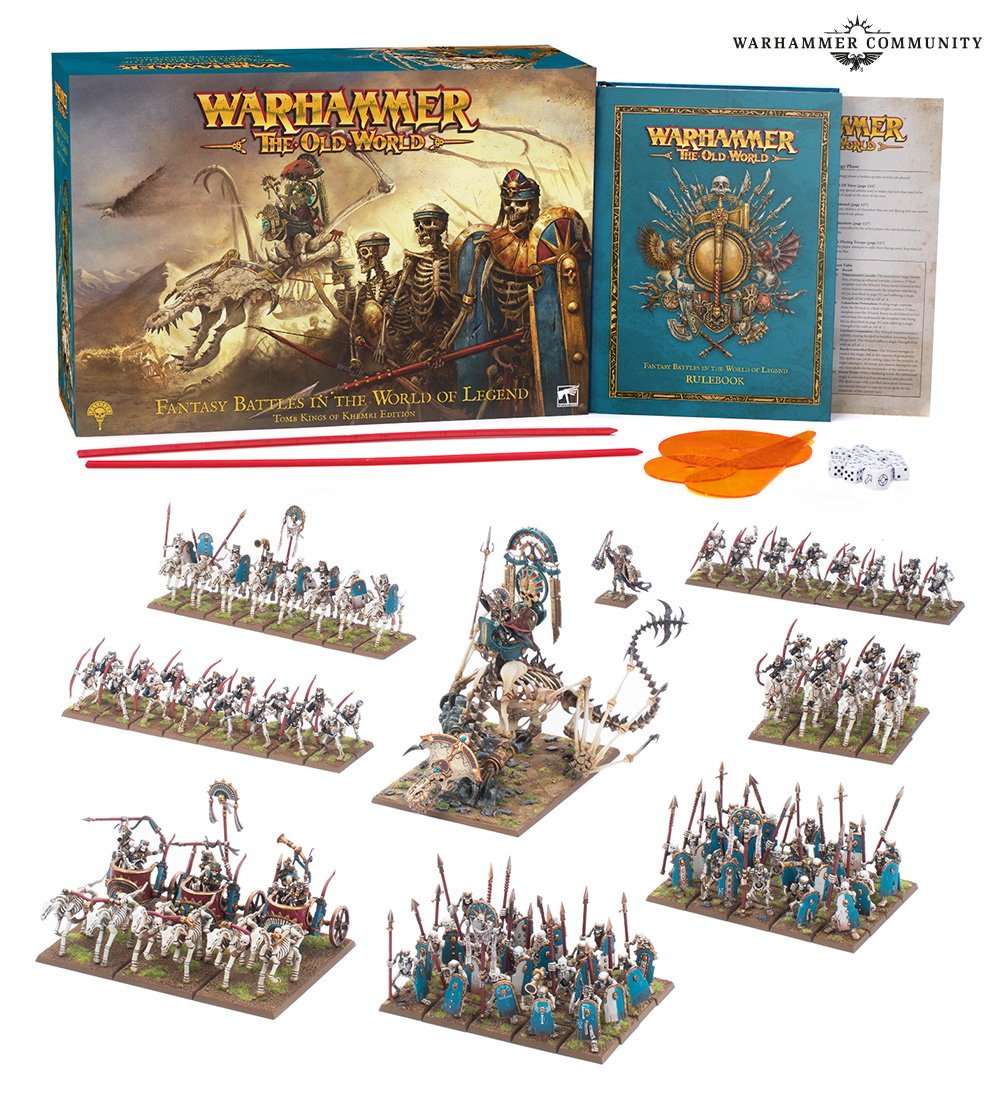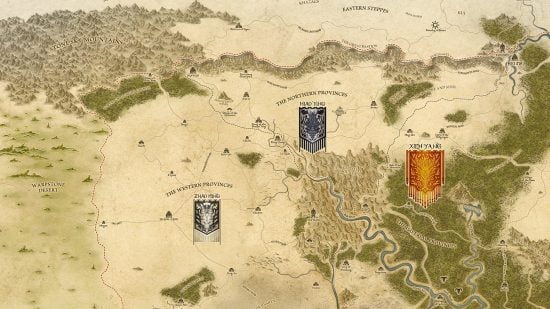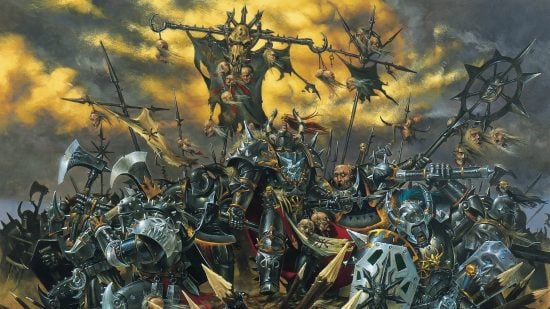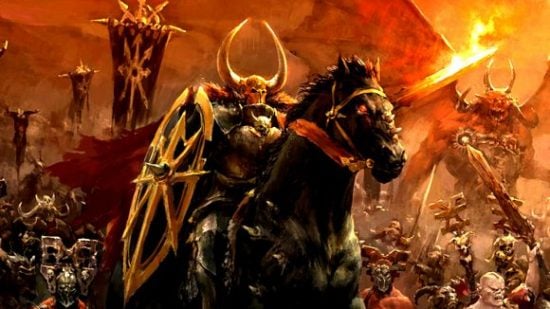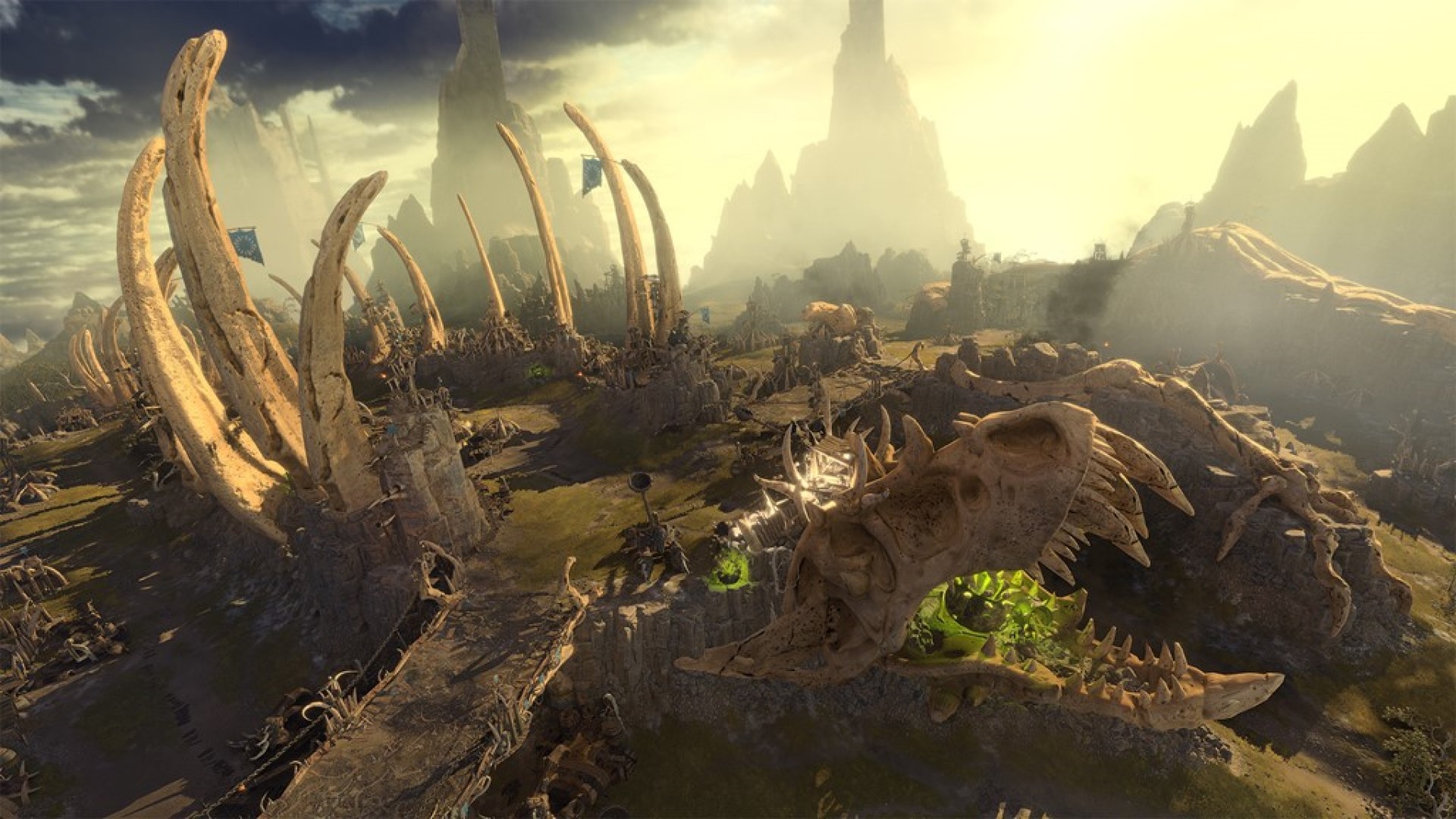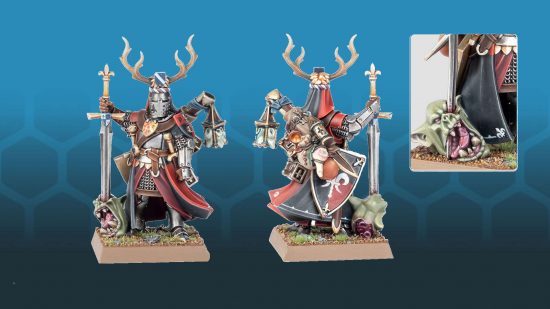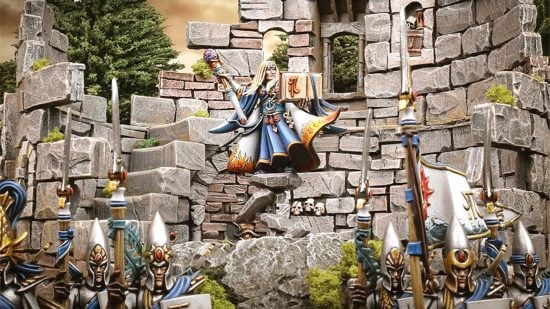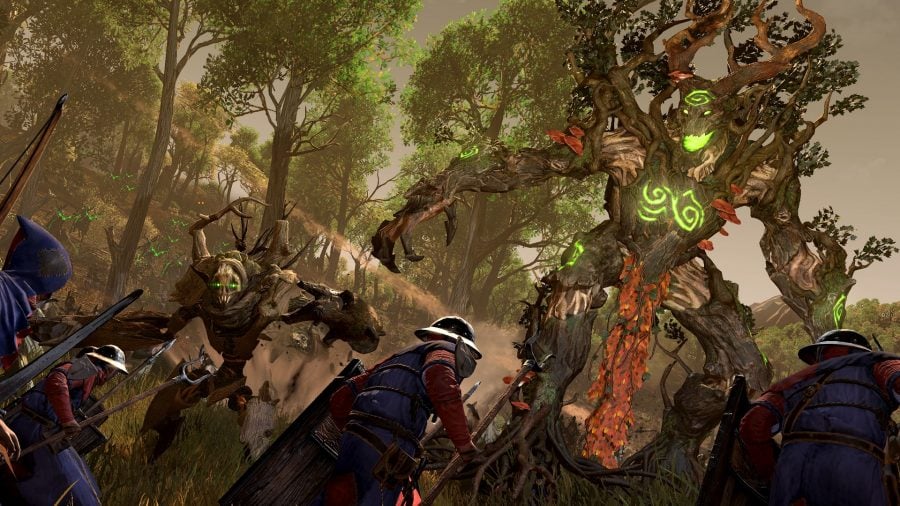Warhammer: The Old World is a reincarnation of the classic Warhammer Fantasy Battle (WFB) miniature wargame, soon to be released by Games Workshop. It will pit fantasy armies including men, elves, Orcs, and dwarves against one another in massed battles on the tabletop.
Warhammer Fantasy Battle was Games Workshop’s first breakout hit miniature wargamer, released way back in 1983, and set in the fantasy Old World. Games Workshop destroyed the Old World in November 2015, and ceased producing many WFB miniatures, making way for the new Mortal Realms setting and Age of Sigmar armies.
New fans are therefore most likely to know the Old World from Warhammer fantasy games on PC like Total War Warhammer: III or Vermintide II. But in November 2019 Games Workshop announced it would return to its roots with a new game, Warhammer: The Old World.
There’s now so much information, that we have a whole separate guide detailing which Warhammer: The Old World factions will be be part of the game from launch. If you’re coming from the Total War Warhammer franchise, you won’t find all of the Total War Warhammer III factions present in the first tabletop version.
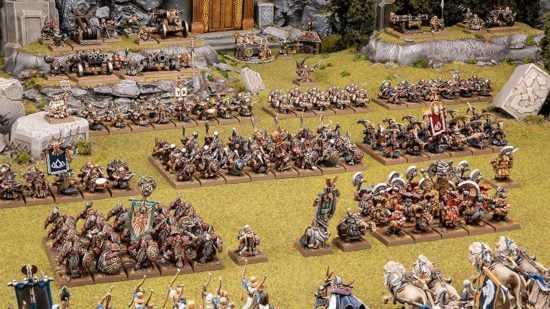
If you’ve arrived at this article but you actually want to know about Games Workshop’s exhibition space and theme bar in Nottingham, you should check out our guide to Warhammer World.
If you’re after the other flavor of Warhammer universe, we have many guides to the Warhammer 40k factions. Or if you’re fully sworn off GW games, we’ve got a handy guide to the best miniature wargames to look for more inspiration.
Here’s everything we know (and can infer) about Warhammer: The Old World
Warhammer: The Old World release date
The Warhammer: The Old World release date will be Saturday, January 20. The launch line up includes new and re-released models for the Bretonnians and Tomb Kings, a new rulebook, and army books for the forces of good and evil, and is available to pre-order from January 6.
The game was announced on November 15, 2019, and in its first article, GW was at pains to make clear that “this is a long way off. Years. More than two. Like three or more. Definitely not soon”.
In a Warhammer Community update article on The Old World on July 21 2021, GW reiterated – with deliberate coyness – that it would still be “quite some time yet” before the game arrived, and that further updates would arrive on the Warhammer Community site “at some point”.
Warhammer: The Old World starter set
There are two Warhammer: The Old World starter sets – the Tomb Kings of Khemri edition and the Kingdom of Bretonnia edition. Each comes with the core rules, a complete army of classic plastic miniatures, and a new centrepiece miniature to lead the force.
Games Workshop caused some confusion when it announced at Warhammer Fest 2023 that Warhammer: The Old World wouldn’t have a starter set.
Games Workshop uses the term ‘starter set’ in a very particular way – it refers to products intended for someone who has never played a wargame or serious strategy game before. An important feature is a supplementary “how to play” manual that introduces the newcomer to the hobby in a much more gentle way than a regular rulebook.
For an example of this, notice how the Warhammer 40k 10th edition launch box Leviathan was not marketed as a Warhammer 40k starter set, even though it contained the core rulebook and enough models to start two armies.
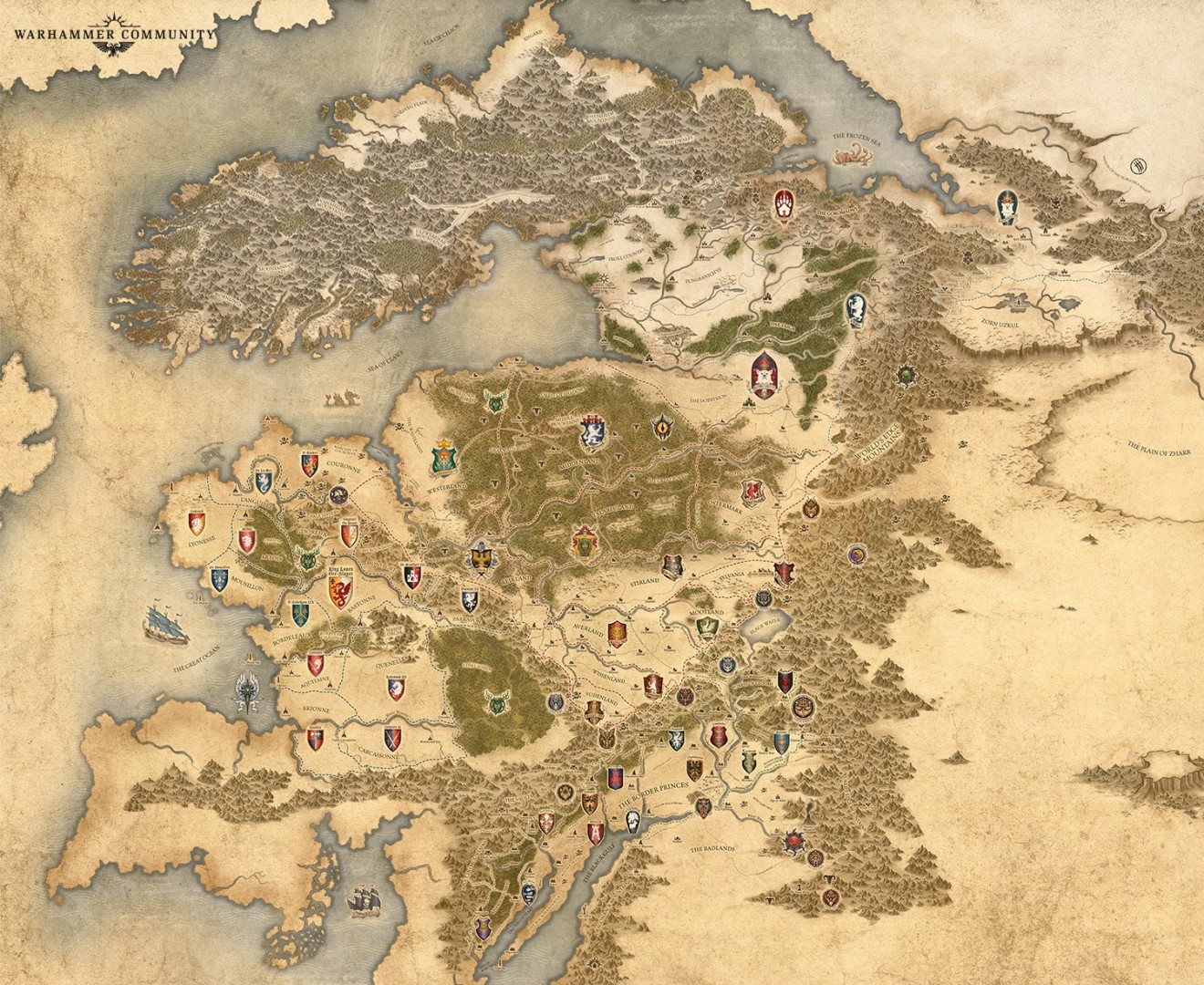
Warhammer: The Old World map and setting
GW has revealed several versions of the Warhammer: The Old World map, starting with a map of – unsurprisingly – the Old World itself. If the Warhammer world is a slightly distorted fantasy version of Earth, the Old World is the part roughly analogous to Europe.
The Empire (the fantasy Holy Roman Empire) and Bretonnia (fantasy medieval France) featured on this first version of the map. They’ve always been core parts of the setting. Kislev (fantasy Russia), Tilea (fantasy Italy), and Estalia (fantasy Spain) were all sketched out in similar detail – these regions have had cursory coverage in previous editions of WFB, if any.
The map of the Warhammer World was actually one of the first pieces of work that (now independent) artist Louise Sugden did after joining Games Workshop, as she revealed in her interview with Wargamer. She joined the Specialist Design Studio in 2016, so if she really did get cracking on the map right away, The Old World may have been in early development much earlier than we might have thought.
The most surprising part of this map is that it contains Grand Cathay. Cathay has long been part of the Warhammer World and was a starter faction in Total War: Warhammer 3, but it has never been mapped in detail before – despite the fact it won’t feature as a playable faction when The Old World launches.
The map shows its cities and roads, its Great Bastion fortress wall, and its terrain — from the Warpstone Desert in the West to the Forests of the Moon in the East. Games Workshop’s article assures us that the map is not only valid for Total War: Warhammer 3 but also for the period explored in Warhammer: The Old World.
Warhammer: The Old World timeline
GW nailed down the Warhammer The Old World timeline in a WarCom post on January 11 2023: the new game is set in the decades prior to the Chaos invasion led by Asavar Kul in 2301 IC.
This cataclysmic invasion came at the end of centuries of civil strife within the Empire, with the Emperor’s throne long vacant, and the four provinces of Westerland, Osterland, Talabec, and Reikland vying for control.
That’s about a century later than we initially expected. GW had previously confirmed that Louen Orc-Slayer (not Louen Leoncouer) is the King of Bretonnia in Warhammer: The Old World. The last published army book for Bretonnia stated that he declared an Errantry War against the Orcs in 2201IC, a century before Kul’s invasion, making him a very old man by that point – though incredibly long life is not impossible for one who has drunk from the Bretonnian Grail.
Warhammer: The Old World and the End Times
The End Times narrative brought an end to Warhammer Fantasy Battles in 2015, and the Warhammer Old world in 2528 IC – the new game is set hundreds of years prior. While elves and (possibly) a few dwarves live long enough to cross over between the two settings, and daemons are eternal, for the most part this allows the new game to have a cast and plot totally disconnected from the End Times.
It does raise an interesting question about a small number of miniatures that were added to the game in the last days of Warhammer Fantasy Battle, such as the Putrid Blightkings and Khorne Wrathmongers.
Many of the models released alongside the End Times supplement were heralds of the apocalypse, such as the Brothers Glott or the resurrected Nagash – but does this apply to footsoldiers? As the Warriors of Chaos are confirmed as a supported faction, we should find out soon enough.
Warhammer: The Old World rules
GW now revealed almost all of the Warhammer: The Old World rules, with the first feature article with printed rules examples coming out on October 30. Check our separate article on Warhammer The Old World rules to see what has been covered so far.
Before that, GW revealed some top-level information via a development diary in July 2023, which we’ve summarised below:
Ranks and flanks
According to the development diary, “the rules encourage units with wide frontages… even those models that are within the fighting rank but not in base contact with the enemy [can] bring their weapons to bear”. However “the ideal number of models per rank is decided by the player, not enforced by the rules.”
This is a major overhaul from previous editions of Warhammer, where particular frontages had special importance – a unit had to be four or five models wide (depending on edition) to claim rank bonuses, or ten models wide to form a Horde, which allowed the front three ranks to fight in melee.
Characters
Players will have the “freedom to create and arm characters as you choose from a wide range of options”, unlike the fixed character loadouts of Age of Sigmar.
Morale
“Units that lose a round of combat will often give ground reluctantly rather than immediately breaking and fleeing, while the winner can advance to press their advantage”… though “an advancing unit runs the risk of exposing a vulnerable flank to a well-timed counter charge”.
Magic Phase
It seems that The Old World won’t have a Magic Phase: “spellcasting has been liberated and spread throughout the different phases of the game, rather than restricted to just one”, according to the design team. They add: “the focus has shifted from keeping track of dice pools or hands of cards onto the positioning of Wizards” .
This sounds like the kind of total overhaul to Magic abilities we saw in the removal of the psychic phase for Warhammer 40k 10th Edition or Warhammer: The Horus Heresy 2nd edition.
The designers claim that “Situations where a single spell can decide the outcome of a battle are rare” – sure to bring a tear to the eye of High Elf players everywhere – and that “every spell available to a Wizard can have a significant impact upon the battle if cast in the right place and at the right time”.
Warhammer The Old World base size
The first teaser for the game hinted it would use square bases, and in a July 2021 article, GW affirmed that “Regiments move in ranked-up units, and strategic manoeuvring into position to launch or receive a critical charge will be as much a key part of the game as it ever was”.
Age of Sigmar eschewed WFB’s deliciously complicated rules for facings, reforming, wheeling, in favor of ‘skirmishes’ between loosely corralled models on 40k-style circular bases – The Old World brings them back
If you were planning to blow the dust off your old WFB army and plonk it straight into Warhammer: The Old World, you’ll need to do a little more work first. A development diary from April 14 2023 explains that, in order to better accommodate the larger minis that characterised WFB towards the end of its lifespan, models will have larger bases.
The details Games Workshop has provided so far are vague, but new base sizes will be part of the unit profile.
| Warhammer base size | The Old World base size |
| 20mm | 25mm |
| 25mm | “New size” |
| 25 x 50mm (cavalry) | “New size” |
All 20mm bases will be replaced with 25mm bases, and most 25mm and 25x50mm (cavalry) bases will be replaced with a new base size. The new base sizes for your troops will be part of their unit profile.
Warhammer: The Old World miniature scale
GW confirmed in its July 2021 article that the Warhammer: The Old World miniatures scale will be the same as the original Warhammer Fantasy Battle, 28mm – putting paid to scurrilous rumours it might go either bigger or smaller.
“We want people to be able to use their old armies if they wish, or to start new ones, or to add new miniatures to old armies – whatever they want”, the article explains.
Speculation had for some time been rife that The Old World would strike out alone with a totally different model scale. Spikey Bits cited “an industry insider” who says they may go smaller (15mm or 8mm), to create battles with a more ‘epic’ feel, which would have been cool but was definitely wrong.

There were some interesting arguments for this, to do with the precedent set by Warmaster (a short-lived ‘epic’ scale version of WFB), appealing to the Total War crowd, or attempting to make things difficult for companies making “counts-as” miniatures.
If you are interested in a small scale miniature wargame, we’re waiting for news of the upcoming Warhammer Legions Imperialis release date. If you’re impatient to play something with ranks and flanks already, Kings of War has a place on our list of the best miniature wargames, and then there’s the unofficial Warhammer Armies Project.
Source: Wargamer



